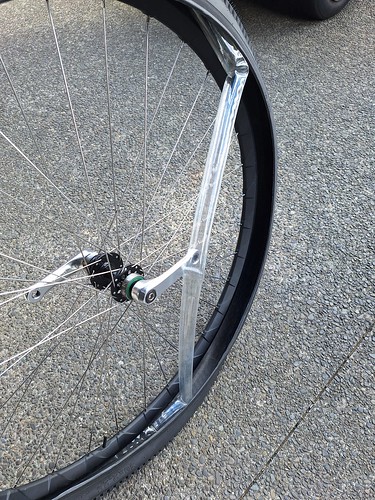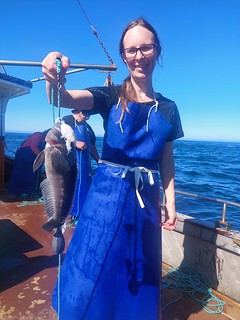I am at Unicon, The Unicycle World Championships and Convention, held every 2yrs. This is the 21st edition, in the town of Bemidji in Minnesota, USA. If you are a unicyclist, Unicon is something you must attend at least once in your life! The 12 day event showcases multiple disciplines within unicycling- from road racing, track events, trials, artistic freestyle, street and flatland, unicycle hockey and basketball, mountain unicycling and much more.

Not only is it our world championship, but it’s also our world convention. It’s a chance to meet riders from different countries and take part in workshops, social events and rides. With over 1000 participants, it’s a celebration of all things unicycling.


This year’s opening ceremony started with a world record attempt by Jamey Mossengren ‘The Unicycling Unicorn’, trying to ride the world’s tallest (44 foot/ 13.4m) unicycle built by Tommy Miller of the Unicycle Factory. Jamey didn’t quite nail it during the opening ceremony, but managed to break the record later in practice.

There was a very cool unicycle museum compiled by Jamey, which had a huge range of historical unicycles, as well as some weird and wonderful creations.



My favourite event was the flaming puck hockey, hosted by the Bemidji Fire Department


My contribution to workshops included running the T-shirt swapping…

….and a pleasant 64km social ride from Bemidji to Laporte along the Paul Bunyan Trail. This is an old rail trail that has been paved and now serves as 190km bicycle route through the middle of the state.


I also hosted a unitouring workshop, showing off 20yrs of Adventure Unicyclist photos from around the world. I will post an anniversary album once the compilation is complete.
In terms of competition, my focus was on the road races, with a bit of Muni and cyclocross thrown in for fun:
10km standard class
The course was along the Paul Bunyan trail next to Unicon headquarters at the Sandford Centre. The first 8km was almost entirely flat and straight, then turned into a forested area leading to the shore of Lake Bemidji.
Standard class requires every rider to compete on a 24 unicycle with 125mm cranks. In other words, roughly half an hour of pedaling like crazy. The 10km standard is the biggest Unicon competition, overlapping track events in terms of wheelsize/crank standard, so the ultra fast track racers also compete.
The standard class has always fascinated me. I love the elegant simplicity of the standard, ungeared unicycle, and the skill involved in revving a unicycle to phenomenally high cadences. Since my first Unicon in Tokyo (2004), where I watched Hiroki Shigeno pedaling to victory in an incredible 28min22s, I have wanted to medal in this event. Moving from unlimited class (any size wheel/gear/crank length) 10yrs ago, I’ve had two 4th placings, a 6th and a 13th place, so it was my primary focus during training this year.
I started in the first wave of elite riders. 3,2,1 go….I can’t sprint like my rivals off the line, but did my best to hang on for the first 2km. We were averaging 21-22km/hr. As expected, Luis Albers (Germany) was off the front, with a group of Nicolas Chopiné (France), Fabian Toledo (Chile) and myself trying not let elastic band snap. Thankfully, the pace slowed just as Nico and Fabian dropped off the back, and I hung on to Luis for all 8km until the turn down to the lake. Unfortunately I couldn’t relax enough to spin fast on the slight twisty downhill, and Luis put a gap of 11s on me by the finish. I rolled across the line in 29min21s in second place, a personal best for the 10km, and my first ever expert medal in the standard 10km! My transition to a standard 10km racer is complete.



Loop the lake 54km standard class
My next race was the ‘Loop the lake’, a picturesque 2 lap race around Lake Bemidji. It followed primarily cycle paths with some open road. I was racing standard class again, but this time the 29″ standard. You have to keep within the maximal 29″ wheel diameter, but are allowed to choose your crank length. I opted for 80mm, while my competition mostly ran 75mm cranks. I felt the extra 5mm leverage was good for the bumps and the slight climb on the back portion of the lake.
To say this is a super fun event is an understatement. The locals and unicyclists were out in force cheering us on, around a scenic and challenging course.
I was immediately in trouble as my younger competitors set a furious pace off the line. Luis Albers and Aurélien Paulmier dropped the group comprising myself, Souryan Dubois and Nicolas Chopiné within a couple of kms, then Aurélien put on his turbo legs and dropped Luis. I still had Luis in sight when we hit the road section, and spent most of the first lap trying to inch my way back. I managed to catch Luis on the straight back to Sandford Centre (the 10km race course in opposite direction), and we rode together to complete the first lap. Aurélien was already 1min 30s ahead, and so the fight would be for 2nd place. Luis was the stronger rider- I tried do some work at the front, but mostly did my best to avoid getting dropped by Luis. We passed a number of unlimited riders, their reactions priceless as we flew past their geared/36″ unicycles.
I upped the pace on the short climbs at the back of the lake, but couldn’t drop Luis, so sat up as we hit the final 8km straight. If I was lucky he might make a mistake- which, although unlikely, was the only way to beat him. As it happened, Luis cramped up 2-3km from the line. One minute he was there, the next he wasn’t. I didn’t look back as I pedaled as hard as I could to the finish line, coming second in 2hrs4min37s, a very fast 26.0km/hr average speed. Luis rolled in a minute later, while Aurélien won the race in 1hr58min38s, an incredible 27.3km/hr average speed!
Another expert silver for the medal cabinet, and an age group gold medal for the 40+ category. Not a bad day’s work.
Cyclocross and MUni uphill
I haven’t focused on off-road events for a number of years. Back in 2004, I came 3rd in the cross country and 3rd in the downhill. The sport is unrecognisable today- the technical ability required in MUni is so much higher. It doesn’t suit my skillset, which is to pedal very fast, rather than risk life and limb on the typical modern race course. I was entered in the cross country, but decided to skip it to save my legs for the road races. The uphill race was held at a picturesque local ski resort. I went to check it out, but my unicycle was overgeared (29/125mm) to it make up the hill, so I took my time to complete the race (you are not allowed to walk).
The cyclocross race was hard but a heap of fun. Although there was serious racing going on, it is an event where many riders dress up and there is plenty of cheering from the side lines. It was a Le Man’s start- you run 100m to your unicycle before setting off. A group of riders decided to do 10 push ups after the start gun! Weird, but highlights the fun nature of the event. The course had lots of interesting obstacles and a couple of hard climbs. I tried to stay relaxed and enjoy the race. We had people squirting water, showering us with popcorn and cheese balls, an ice block station, as well as a big green dinosaur chasing riders. I held a decent position and slowly worked my way up the field as it thinned out, finishing a respectable 14th place overall.


Criterium
The criterium was the final road race of Unicon. It’s a short 800m course with lots of tight turns just like a bicycle criterium. Unlike a bike criterium, which is usually held around a city block, this event was held in a carpark. It allowed for a much twistier course, with multiple 180 degree turns. I have been working on my cornering, but it remains a weakness, so I wasn’t sure how it would go until I saw the course, set up the night before.
In the standard class, the first five riders from each heat would progress to final. I was a bit stiff at the start, and struggled to get around the turns as I entered them near the back of the bunch. Luckily, I caught a number of riders on the straights, and gradually worked my way up the field until I crossed the line in 5th place, booking myself in the final.
The finals started off somewhat better. I was in 3rd or 4th position going into the first few turns. Unfortunately, a little mistake around a corner saw me flying off to the side, and passed by everyone. I had to work my way back to finish 7th overall, well off the pace but good enough for an age group silver medal.
Overall, it was a successful Unicon. I am still up there with fastest unicyclists in the world, and I had a great time catching up with friends and seeing a bit of the American midwest.
Results:
10km standard race: Expert (overall) silver, age group gold
54km free distance road race: Expert (overall) silver, age group gold
Criterium standard race: 7th place, age group silver
Cyclocross: 14th place, age group 5th
MUni uphill: 43rd place, age group 15th











































